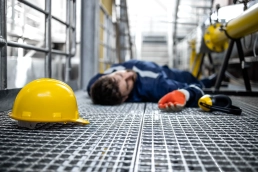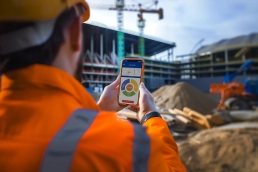The Hidden Risks of Lone Working
Imagining a workplace where employees operate solo conjures a picture of independence and self-reliance. However, this scenario also brings to light a serious concern: lone workers are significantly more vulnerable to accidents due to the absence of immediate support and assistance. This issue is amplified by workplace accident statistics, which emphasize the urgent need for effective safety measures.
It’s comparable to walking a tightrope without a safety harness—the risks faced by lone workers are heightened, and their safety net is minimal. This stark reality highlights the critical necessity for organizations to reassess and strengthen their existing safety protocols, especially for those who work in isolation. By exploring this topic, we can shed light on a frequently overlooked aspect of workplace safety, presenting a thorough and insightful analysis of the situation.
The Risks of Working Alone
Lone workers, especially in construction and industrial sectors, face unique challenges:
- Medical Emergencies: Sudden illnesses or injuries can become critical without immediate assistance.
- Accidents and Injuries: Minor incidents can escalate without timely help.
- Violence and Threats: Those working in high-risk areas can face threats or violence.
- Isolation and Stress: The psychological impact of working alone can lead to increased stress and mental health issues.
According to OSHA, there are approximately 2.8 million non-fatal workplace injuries and illnesses reported by private industry employers annually, with a significant portion affecting lone workers. In Canada, the CCOHS reports that workplace incidents involving solitary workers have increased by 15% over the past decade. Notably, over 20% of workplace deaths in 2019 were in the construction industry, highlighting the critical need for effective safety solutions in this sector.


REACT Lone Worker Feature
To address these risks, we’ve introduced the Lone Worker feature in the latest release of our REACT Cloud-based Platform. This innovative solution incorporates regular check-ins, real-time monitoring, and immediate alerts to ensure the safety and well-being of lone workers. With the Lone Worker feature, checking in at set intervals becomes effortless, ensuring your safety during solo work. If a check-in is missed, an immediate alert is dispatched to relevant personnel, prompting swift action to ensure your well-being.
- Scheduled Check-Ins: Lone workers check in at predetermined intervals using the REACT mobile app. This regular check-in process ensures that the worker is safe and has not encountered any issues.
- Automatic Alerts: If a worker misses a check-in, the system automatically sends an alert to designated personnel, including the worker's last known location and time of check-in, enabling a swift response.
- Real-Time Monitoring: Supervisors and safety officers can monitor the status of lone workers in real-time, providing an additional layer of security.
- Emergency Response: In the event of an emergency, the Lone Worker feature allows for immediate communication and location tracking, ensuring that help is dispatched as quickly as possible.
Conclusion
The safety of lone workers is a critical concern that requires proactive measures. With the new REACT Lone Worker feature, companies can significantly reduce the risks associated with solitary work. By implementing this solution, businesses not only comply with safety regulations but also demonstrate a commitment to the well-being of their employees. Investing in the safety of lone workers through innovative solutions like the REACT Lone Worker feature is not just a regulatory requirement—it’s a moral imperative. Ensuring that every worker returns home safely at the end of the day should be a priority for all employers.
For more information on how REACT can enhance the safety of your lone workers, visit our website or contact us directly.